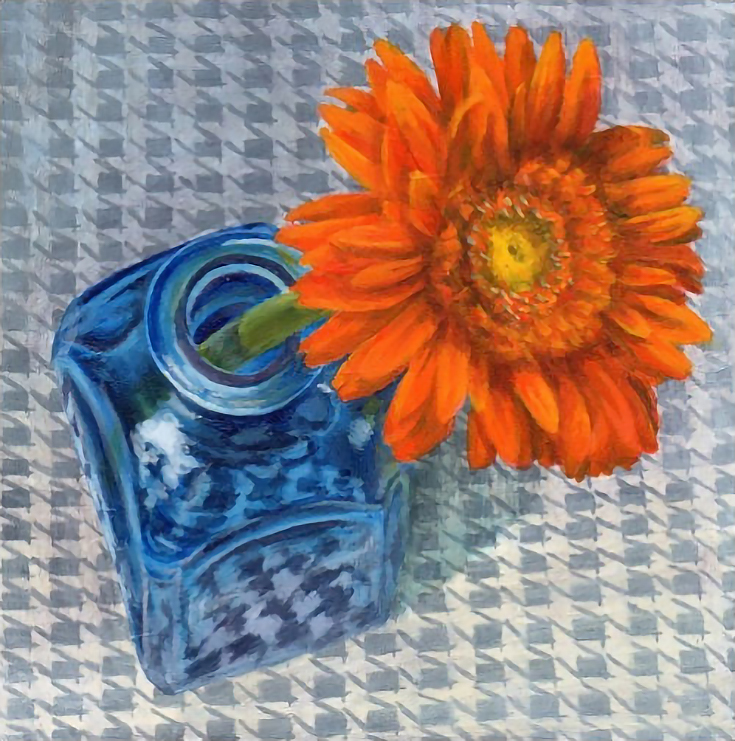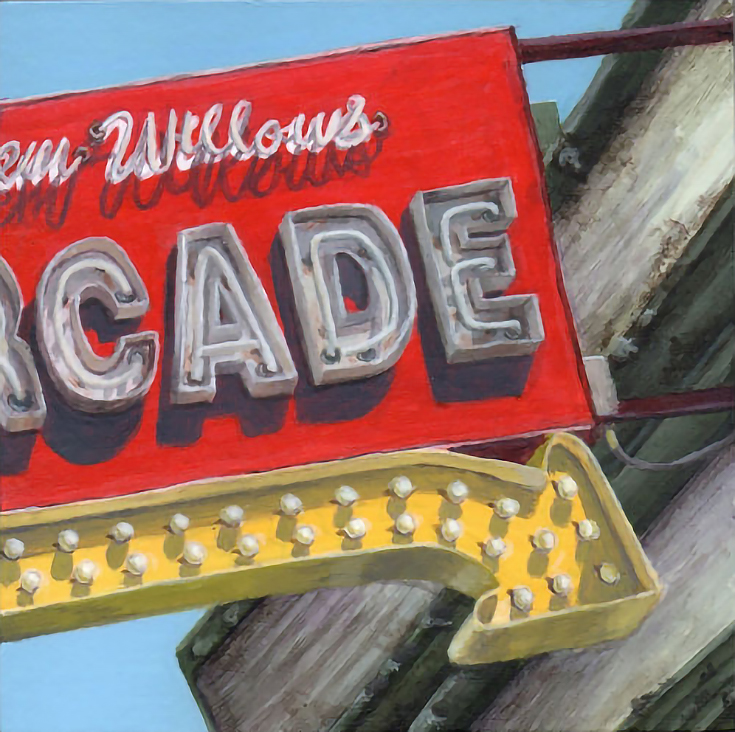 Debbie Shirley attended a Liberal Arts college in Pennsylvania and received degrees in Fine Arts and Communication Arts. After graduation, she moved to New England and became a manager in the printing industry. . . but soon found spending her days in front of the computer unsatisfying.
Debbie Shirley attended a Liberal Arts college in Pennsylvania and received degrees in Fine Arts and Communication Arts. After graduation, she moved to New England and became a manager in the printing industry. . . but soon found spending her days in front of the computer unsatisfying.
After the birth of her youngest child, she picked up a paintbrush and, as cliché as it sounds, felt like she had “come home.”
With the encouragement of a friend, she entered her first exhibit and was surprised to learn that her painting had sold during the opening. That’s all the motivation she needed to take painting seriously.
Alyice: What is your earliest memory of creating art?
Debbie: I feel like I have always been (or wanted to be!) an artist.
Two of my childhood memories strongly stand out in my mind as being really formative. I remember coloring in a coloring book with my Grandfather. I wanted to add things around the pictures, but at school they always told me to stay within the lines.
I can remember my Grandfather encouraging me to add what I wanted and telling me that it was okay if I wanted to make the grass purple and the horses orange. He said that when I was drawing, it was MY world, and I could create anything I wanted in it.
My Grandmother was also a strong influence. She was an artist who worked mainly in acrylics, but also liked to experiment with many different mediums and techniques. I can remember sitting at her kitchen table as a young child, with her squeezing bits of her precious acrylic paint onto styrofoam meat trays for me to play with. She took me to an open studios event in the Little Italy section of Cleveland in the late seventies. I clearly remember being in awe, and thinking to myself that this was a world that I really wanted to be a part of.
Alyice: Why did you choose acrylic as your medium?
Debbie: Sometimes I think acrylics chose me. It was the first kind of paint I used, and I was comfortable with it from the start.
In college, the art department was very small and the building didn’t have proper ventilation for using oil paint so all painting majors were pretty much required to work in acrylics. After school, I couldn’t afford new supplies so I stuck with what I had. And then when I started back up painting a few years ago, I was working around my young children so I didn’t want to have to deal with the disposal issues of oil paint.
Alyice: What is the most challenging part about working with acrylics?
Debbie: The quick drying time.
There are times when I wish they would stay wet just a little bit longer. I also like to work en plein air when possible, and acrylics can be really tricky outdoors—drying faster than I can paint!
I have tried various retarders, but haven’t been happy with the texture, and how much they seem to “flatten” the colors. I keep my paints in little plastic containers instead of squeezing them out on the palette and I find I can keep it workable for much longer that way.
Alyice: What is the best part about working with acrylics?
Debbie: Again, the quick drying time!
I love that I can work quickly without having to wait for the paint to dry. I like to build layers and I can almost always go right back in to work on the next layer. I love that I can use thick paint, showing brush marks and texture, or I can use thin paint, glazing in many layers. I also like that there are so many mediums you can use with acrylics—and so many effects you can get. The versatility is amazing!
Alyice: What do you wish you knew about acrylics before you got started?
Debbie: I’ve learned a lot by trial and error and by reading—I was never really taught anything about acrylics. I guess I would have to say that I wish I had known more about the various mediums. I was too afraid to try them for the longest time!
Alyice: Do you do anything in particular to seal your art?
Debbie: I use a UV varnish made by Windsor & Newton (I also use W&N artists’ paints).
I feel a varnish really protects the surface, especially from the fine dust and gunk that acrylic paint seems to attract. It also helps make the colors sing—especially in really subtle passages. I like to mix a little gloss varnish with a matte one to get a tiny bit of shine and deepen the color without making it “glossy.” I frequently use a spray varnish on my paintings on gesso board to avoid any brush marks from the varnish.
Alyice: What is your creative process like?
Debbie: Most of the time I start with a quick sketch—sometimes it will be written notes—a certain scene, object, shape or shadow that has captured my attention.
If it is clear in my head, then I dive right in, sketching out the idea on a canvas or board. If it is more of an idea, but not a clear image in my mind, then I will do some thumbnail sketches to see if I can figure out how to make it work.
If the work is really small, I usually redraw the image in paint and begin filling in local color. If the work is a little larger, then I will do a monochromatic underpainting with a full range of values. Most of the time I start working in thin layers, building the color as I go. I usually save the darkest darks and lightest lights for last.
Alyice: How has your style changed over the years?
Debbie: In college I painted really large abstract paintings, I am now painting really small realistic ones. Day and night, right?
I think my reason for creating art changed over the years.
In college, I think it was more about self-expression. Now, I see time flying by so quickly (having kids will do that to you!) and I feel like I want to capture little bits of daily life to hold on to.
I think that is why I also like to paint antiques and old buildings, classic cars and old signs. . . these things are disappearing so quickly, and I want to make them last for others to experience.
I also like to celebrate the bounty of things in front of… beautiful flowers, fresh produce from the farmers market, and lush landscapes. I like to make people look at the things they see every day in a different way.
Alyice: What do you believe is a key element in creating a good composition?
Debbie: I don’t know that I can point out one “key element” in creating a good composition. For me, composition has always been really intuitive. Maybe that has to do with coming from a design background. But I generally don’t set out to follow certain compositional rules. I keep working on something until it “looks” right. Then I can go back and look at it technically to see why it works, or what needs to be fixed to make it work, but I don’t usually start out thinking about formal composition.
Alyice: How do you come up with a profitable pricing structure for your acrylic pieces?
Debbie: It’s tricky!
I did some research to see what range similar sized pieces were going for. I also made a business plan and figured out my income goals (being very realistic!) for the next year, 2 years, 3 years, 5 years, 10 years, etc.
I also broke down the number of pieces I would have to paint at which price points to reach those goals, figuring in that I would sell a similar percentage of my paintings created as I have for the last few years.
I do consider the size, support, and time spent, but I don’t have a hard fast square inch formula. I use all this information as a guideline, and I also take into account framing or any other costs when setting my prices.
Because I sell in a wide range of places, from galleries to gift shops to coffee shops to large and small shows to online, I need to keep my pricing consistent, but also have things available in a wide range of price points.
You can visit Debbie at http://debbieshirley.com or debbieshirley.blogspot.com.
This post may contain affiliate links.




